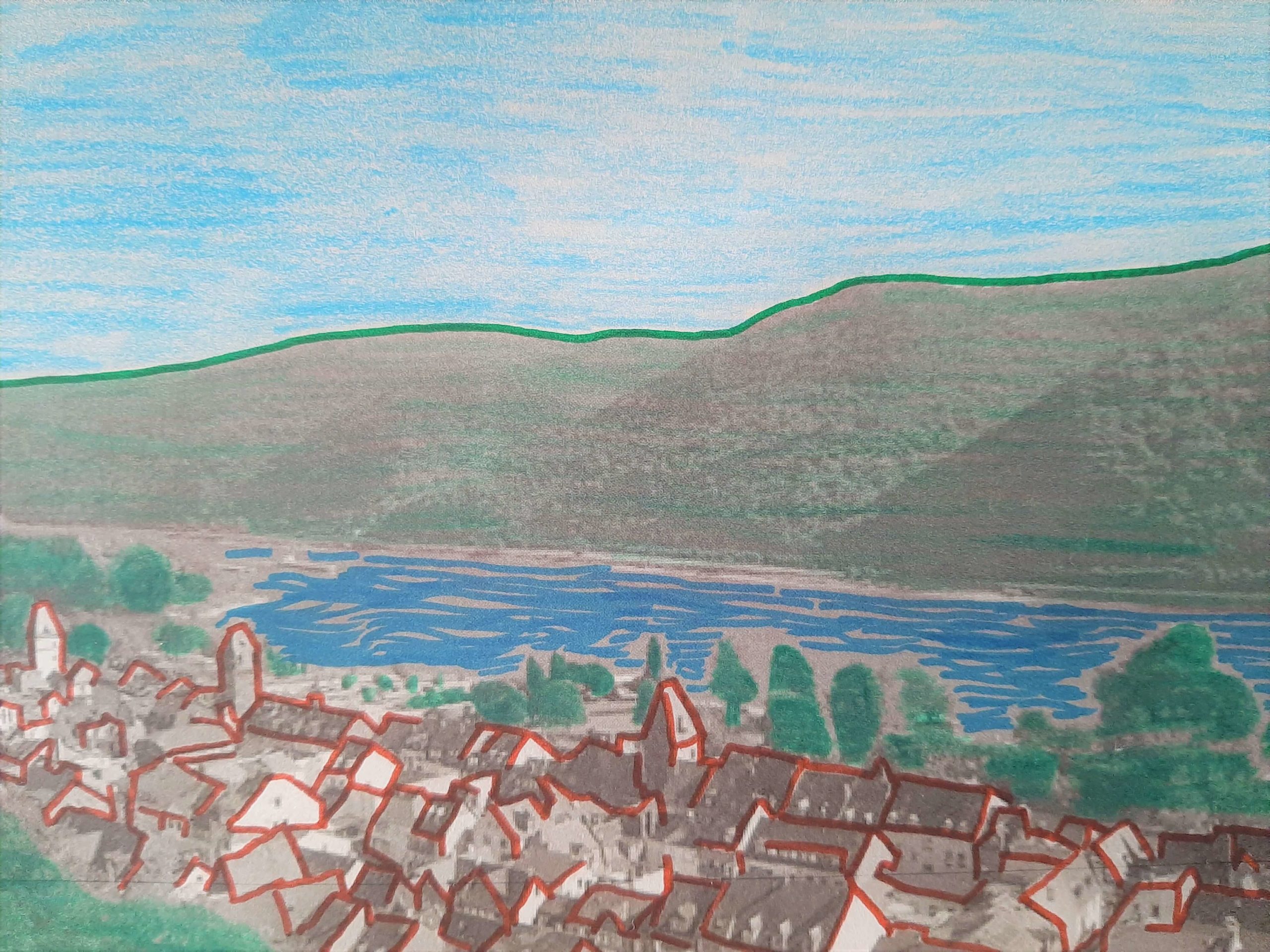By Mariana Martinho, a cultural entrepreneur from Portugal
Do you know when you visit a place and the souvenir shop has all those beautiful and bright postcards? Well, imagine a black and white postcard and colour your own! I tried to colour inside the lines and here it is my visual perception of the Upper Middle Rhine Valley! A breath-taking landscape, alive, full of history and where three colours stand out: blue, green and brown.
Blue
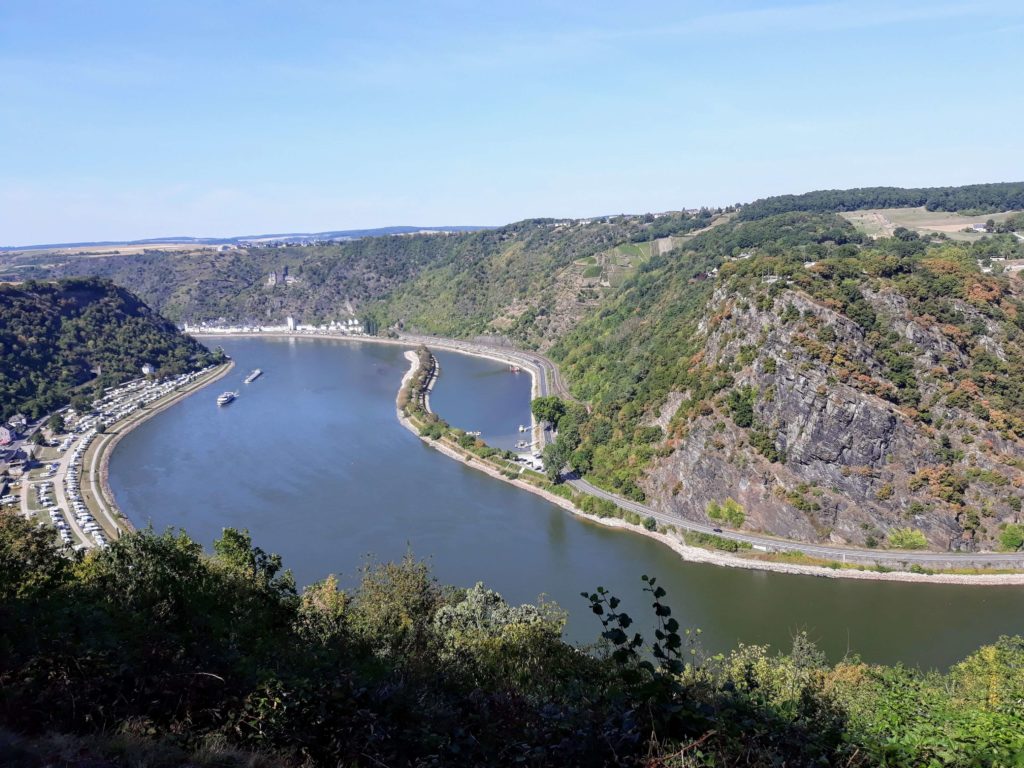
When talking about a river landscape, it makes it easier to guess the first colour. Blue sky and blue river. The absence of clouds and the low levels of rainfall allow a warm temperature in this region, perfect for any sightseeing hike along the Rhine. As one of the biggest rivers in Europe, it starts in Switzerland, passing through Liechtenstein, Austria, Germany, France, finally reaching the Netherlands and the North Sea. But it is between the 526 and 593 kilometers that the river falls into an outstanding valley, being reason enough to be considered World Heritage (criteria ii, iv and v).
Beautiful, but dangerous and the legend of the Loreley testifies it. Where 400 million years ago was an ocean, the geological history left a deep and narrow valley, with an imposing challenge on the kilometer 555. Here and 125 meters above the river stands the Loreley Rock, which setting even allowed a seven-fold echo. The low level of water and the presence of rocks required a major knowledge of sailing. But a more romantic version tells the story of a maiden sited on the top of the rock, brushing her golden hair while singing and enchanting the adventurous sailors, distracting and leading them to a fatal destination. It inspired a poem, written by Heinrich Heine and musically arranged by Friedrich Silcher called Loreley song.
Green
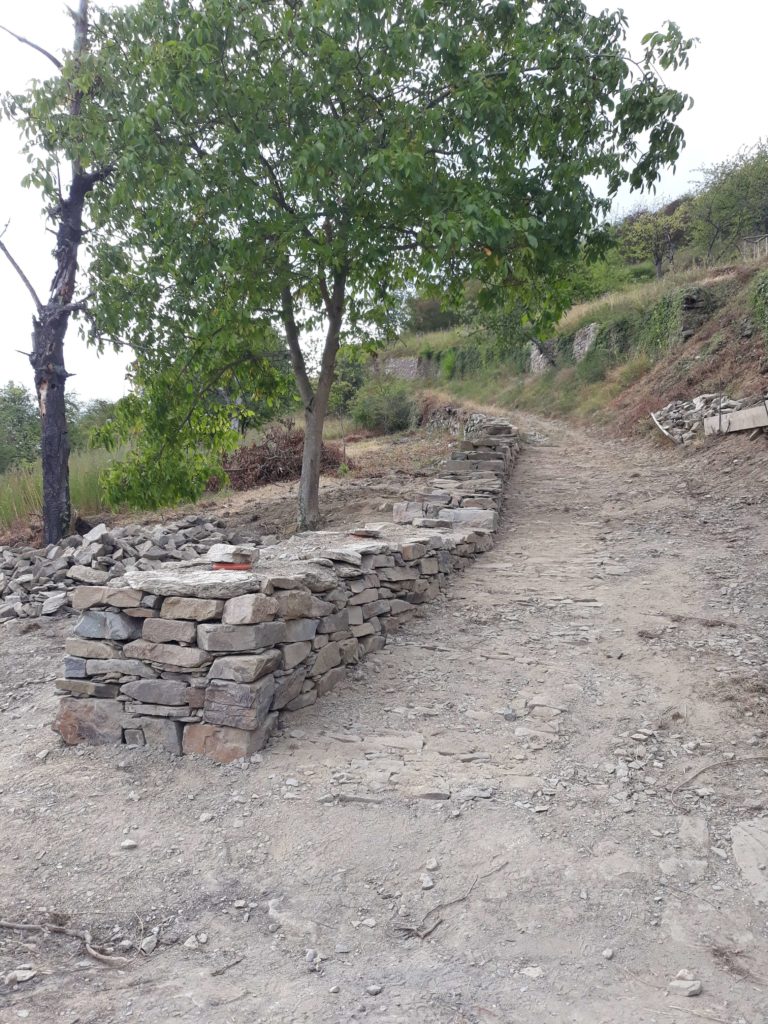
Where there is water, there is also life. The steep slopes around the river didn’t scare the green nature away. Quite the opposite, the vineyards grow in such steep land and produce the famous Riesling Rhine Wine. And they are not easy to maintain, it requires a protective suit, gardening equipment, a mowing machine, and strong muscles!
And establishing a labyrinth among the vineyards, there are dry stone walls. The technique to build them is not easy: finding big and flat stones and creating a puzzle with small ones. Then, choosing the stone’s pretty face and slightly incline them upwards to create a stable wall or stair. And this wall made only by natural materials is where the rare Green Lizard finds a warm and cozy home. Such landscape houses different species and is also naturally decorated by a special rose called “Zauber der Loreley” and by around 80 regional cherry varieties.
Brown
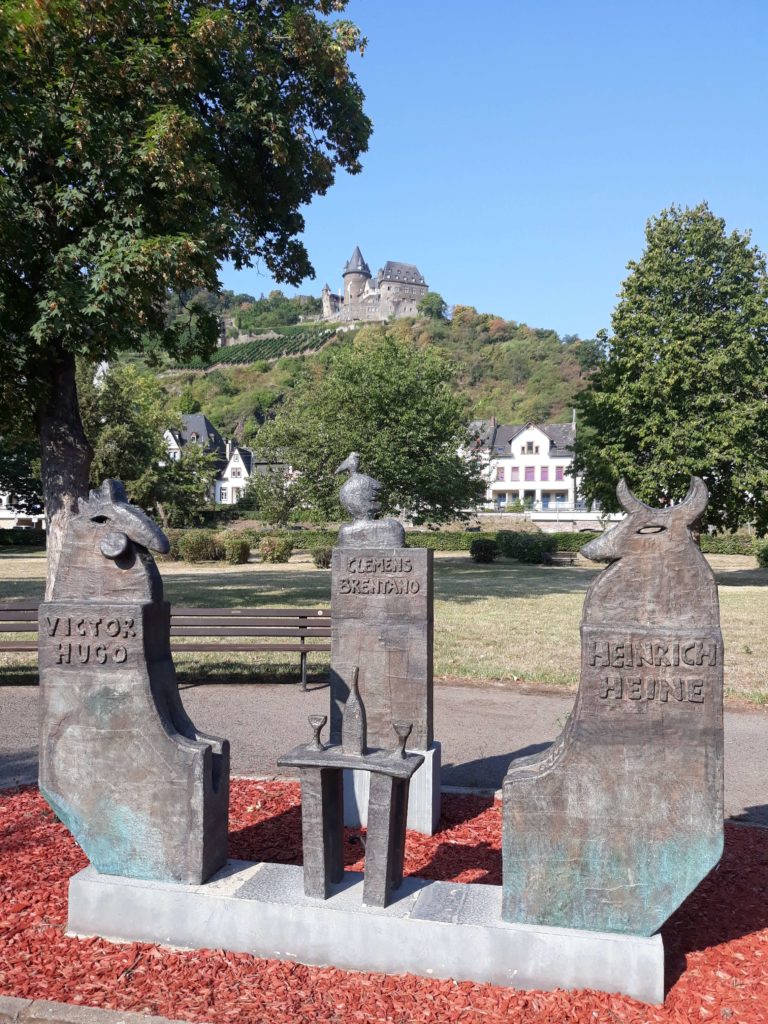
While looking at both sides of the river, you can imagine some brown spots identifying the cultural heritage of the region. First, numerous castles on the top of the valley represent the Medieval times, like the Marksburg Castle which has never been destroyed. Then, small cities such as Boppard and Bacharach are living communities that embody the romantic and mysterious soul of the Rhine Valley. It is not a surprise why famous writers and painters mainly from the 19th century found here some inspiration (like Robert Schuman and his Symphony no. 3, also known as Rhenish). The Rhine was the stage of exchange of ideas, commercial trade, search for gold and historical moments that defined the history of Europe. Here culture flows, literally.
Grey
However, such a wonderful World Heritage title leaves some grey areas. Hanged in some balconies in the villages, posters protest against the noise caused by the railway. Also, the absence of a bridge is a problematic topic, that puts in a stand easier transportation facilities vs the visual impact on the landscape. But, aren’t these problematics test to see landscape true colours of Upper Middle Rhine Valley? Such topics help to create discussion and awareness around heritage.
And whether it is by boat, cable car, train, bike, ferry or just walking, picture how colourful can these 67 kilometers get.
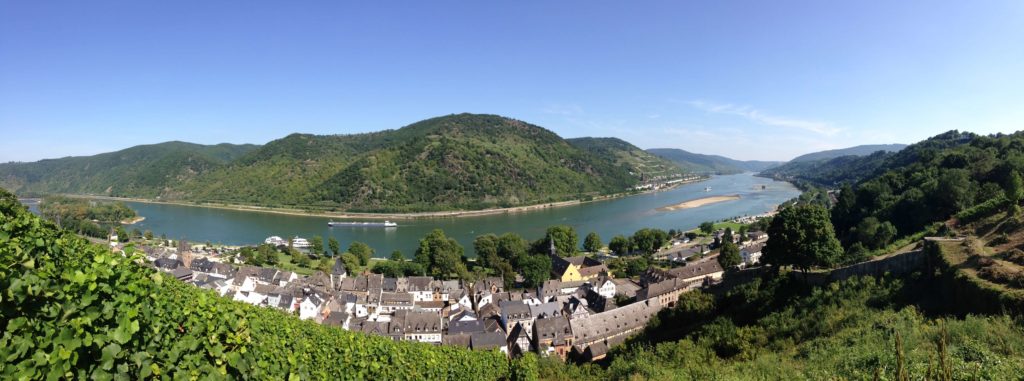
This article is based on my experience in volunteering projects that were organized by European Heritage Volunteers, the Upper Middle Rhine Valley World Heritage Association (2016), Green Thumb Association (2017 and 2018), and the German Fortresses’ Association (2019).
XXXXXXXXXXXXXXXXX